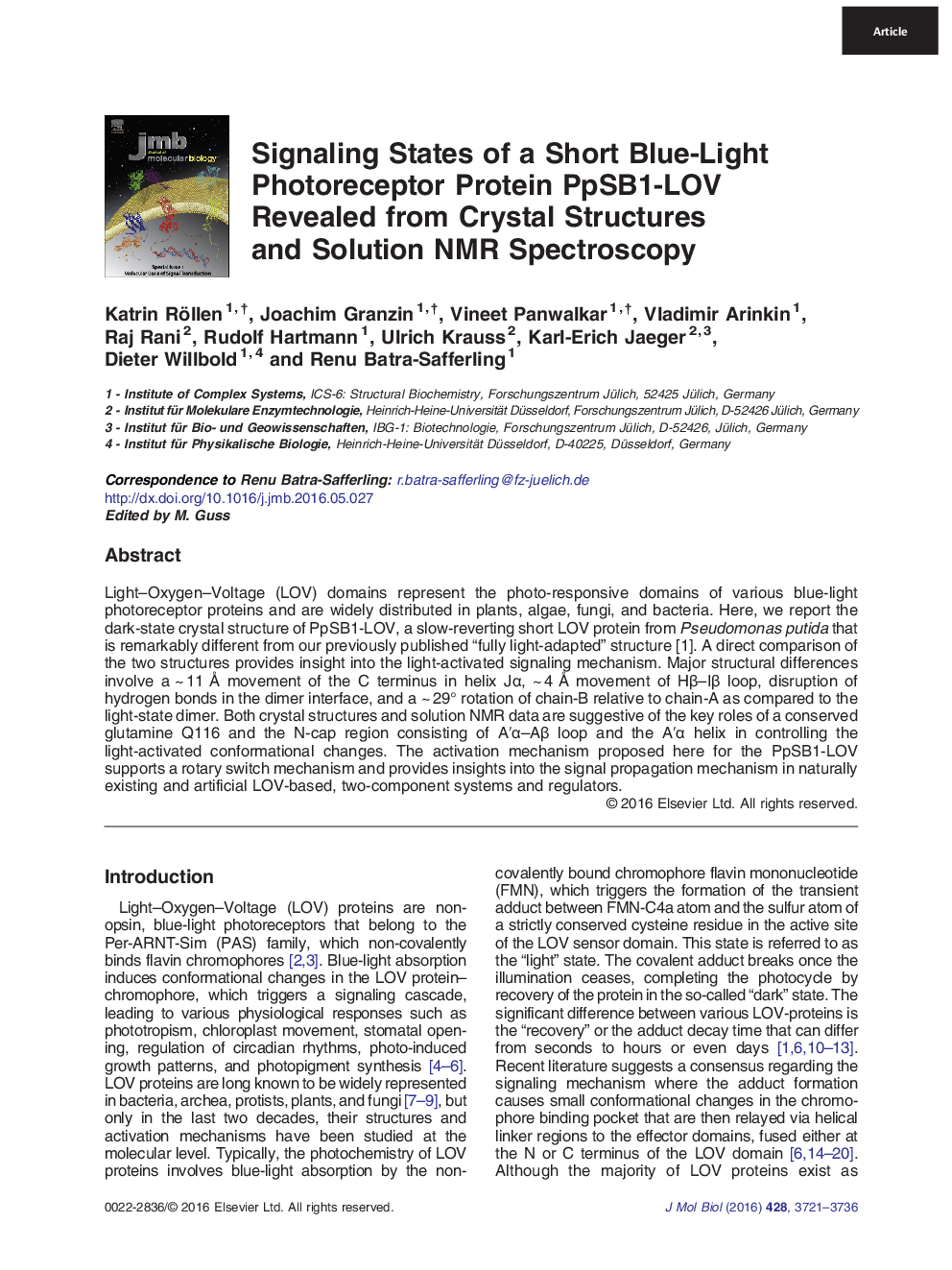| Article ID | Journal | Published Year | Pages | File Type |
|---|---|---|---|---|
| 5532905 | Journal of Molecular Biology | 2016 | 16 Pages |
â¢Comparison of crystal structures of PpSB1-LOV in dark and light statesâ¢Dimer interface and the C-terminal Jα-helix show major structural rearrangements.â¢A ~ 29° rotation between the two protein chains gated by lightâ¢Extensive NMR solution studies reveal light-induced conformational changes.â¢We propose a rotary switch mechanism for the activation.
Light-Oxygen-Voltage (LOV) domains represent the photo-responsive domains of various blue-light photoreceptor proteins and are widely distributed in plants, algae, fungi, and bacteria. Here, we report the dark-state crystal structure of PpSB1-LOV, a slow-reverting short LOV protein from Pseudomonas putida that is remarkably different from our previously published “fully light-adapted” structure [1]. A direct comparison of the two structures provides insight into the light-activated signaling mechanism. Major structural differences involve a ~ 11 à movement of the C terminus in helix Jα, ~ 4 à movement of Hβ-Iβ loop, disruption of hydrogen bonds in the dimer interface, and a ~ 29° rotation of chain-B relative to chain-A as compared to the light-state dimer. Both crystal structures and solution NMR data are suggestive of the key roles of a conserved glutamine Q116 and the N-cap region consisting of Aâ²Î±-Aβ loop and the Aâ²Î± helix in controlling the light-activated conformational changes. The activation mechanism proposed here for the PpSB1-LOV supports a rotary switch mechanism and provides insights into the signal propagation mechanism in naturally existing and artificial LOV-based, two-component systems and regulators.
Graphical AbstractDownload high-res image (133KB)Download full-size image
